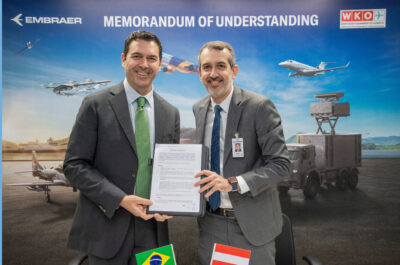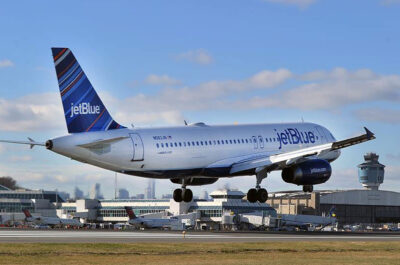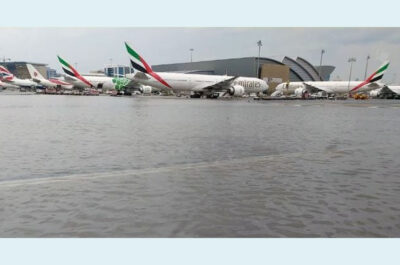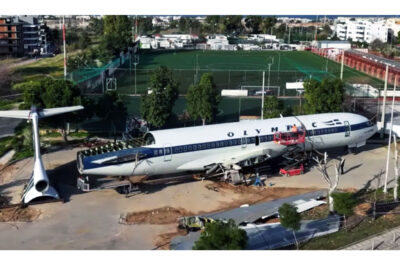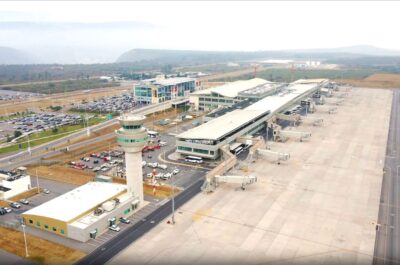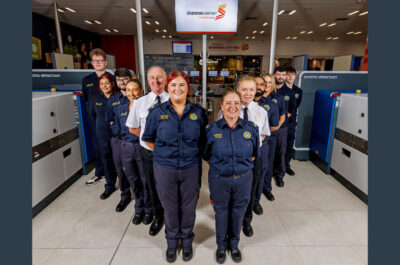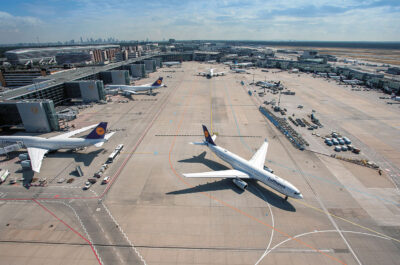IATA member airlines’ accident rate was 0.83 per million flights, which was an improvement over the 5-year average rate of 0.96. Total flight operations reduced by 53% to 22 million in 2020.
MONTREAL – The International Air Transport Association (IATA) announced the publication of the 2020 Safety Report and released data for the 2020 safety performance of the commercial airline industry.
- The total number of accidents decreased from 52 in 2019 to 38 in 2020.
- The total number of fatal accidents decreased from 8 in 2019 to 5 in 2020.
- The all accident rate was 1.71 accidents per million flights. This is higher than the 5-year (2016-2020) average rate which is 1.38 accidents per million flights.
IATA member airlines’ accident rate was 0.83 per million flights, which was an improvement over the 5-year average rate of 0.96.
Total flight operations reduced by 53% to 22 million in 2020.
Fatality risk remained unchanged compared to the five-year average at 0.13.
With a fatality risk of 0.13 for air travel, on average, a person would have to travel by air every day for 461 years before experiencing an accident with at least one fatality. On average, a person would have to travel every day for 20,932 years to experience a 100% fatal accident.
“Flying is safe, although the industry did take a step back on performance in 2020. The severe reduction in flight numbers magnified the impact of each accident when we calculate rates. But numbers don’t lie, and we will not allow this to become a trend. We will have even sharper focus on safety during this period of reduced operations and as flight schedules are rebuilt when the world reopens,” said Alexandre de Juniac, IATA’s Director General and CEO.
For the first time in more than 15 years there were no Loss of Control Inflight (LOC-I) accidents, which have accounted for the largest share of fatalities since 2016. “The lack of any such events in 2020 was a positive development. Nevertheless, based on the initial reports from the investigation into the tragic loss of Sriwijaya Air SJ 182 early in 2021, we must continue to learn and improve,” said de Juniac.
|
|
2020 |
2019 |
5-year average (2016-2020) |
||||
|
All accident rate (accidents per one million flights) |
1.71 or 1 accident every 0.58 million flights |
1.11 or 1 accident every 0.9 million flights |
1.38 or 1 accident every 0.75 million flights |
||||
|
Total accidents |
38 |
52 |
52.4 |
||||
|
Fatal accidents |
5 (3 jet and 2 turboprop) with 132 fatalities |
8 with 240 fatalities |
7.6 with 222.4 fatalities |
||||
|
Fatality risk |
0.13 |
0.09 |
0.13 |
||||
|
Jet hull losses (per one million flights) |
0.21 which is equal to 1 major accident for every 4.8 million flights |
0.15 (one major accident for every 6.6 million flights) |
0.20 (one major accident for every 5 million flights) |
||||
|
Turboprop hull losses (per one million flights) |
1.59 (1 hull loss for every 0.63 million flights) |
0.69 (1 hull loss for every 1.45 million flights) |
1.07 (1 hull loss for every 1.0 million flights) |
Jet hull loss rates by region of operator (per 1 million departures)
The global average hull loss rate rose slightly in 2021 compared to the five-year average (2016-2020) despite improvement in five regions.
| REGION | 2020 | 2016-2020 |
|---|---|---|
|
Global
|
0.21
|
0.20
|
|
Africa
|
0.00
|
0.28
|
|
Asia Pacific
|
0.62
|
0.30
|
|
Commonwealth of Independent States (CIS)
|
1.37
|
1.20
|
|
Europe
|
0.31
|
0.14
|
|
Latin America and the Caribbean
|
0.00
|
0.39
|
|
Middle East and North Africa
|
0.00
|
0.34
|
|
North America
|
0.00
|
0.10
|
|
North Asia
|
0.00
|
0.03
|
Turboprop hull loss rates by region of operator (per 1 million departures)
Six regions showed improvement or no deterioration in the turboprop hull loss rate in 2020 when compared to their respective five-year averages. Accidents involving turboprop aircraft represented 29% of all accidents and 40% of fatal accidents in 2020.
| REGION | 2020 | 2016-2020 |
|---|---|---|
|
Global
|
1.59
|
1.07
|
|
Africa
|
13.02
|
4.93
|
|
Asia Pacific
|
0.00
|
0.58
|
|
Commonwealth of Independent States (CIS)
|
0.00
|
13.75
|
|
Europe
|
0.00
|
0.00
|
|
Latin America and the Caribbean
|
2.35
|
0.73
|
|
Middle East and North Africa
|
0.00
|
1.44
|
|
North America
|
0.00
|
0.30
|
|
North Asia
|
0.00
|
0.00
|
Safety in Africa
Airlines based in sub-Saharan Africa experienced six accidents last year, two of which were fatal, both involving turboprop aircraft. This is the same number of fatal accidents that occurred in 2019, nevertheless the fatality risk increased owing to the fact that there were fewer flights last year. There were no hull loss accidents involving jet aircraft in 2020.
The focus in Africa continues to be on accelerating the implementation of the International Civil Aviation Organization’s (ICAO) safety-related standards and recommended practices (SARPS). At year-end 2020, some 28 African countries (61% of the total) had at least 60% SARPS implementation, unchanged from 2019. “While we recognize the extraordinary challenges in 2020 that touched on all aspects of aviation, we hope that we will see additional movement in this number as the pandemic recedes,” said de Juniac
IATA also continues to work closely with all key stakeholders in the region. IATA and African Airlines Association (AFRAA) joined forces with the African Civil Aviation Commission (AFCAC) on a three-year safety project to provide technical support to the African air operators of states party to the Single Africa Air Transport Market (SAATM) to ensure they achieve and maintain global aviation safety standards.
Safety in CIS
Airlines based in the CIS region experienced no fatal accidents in 2020, which was a significant improvement compared to 2019. The jet hull loss rate for CIS airlines in 2020 improved compared to 2019 but declined compared to the five-year average 2016-2020 and was the highest among regions. CIS airlines experienced no turboprop hull loss accidents in 2020, a significant improvement over 2019 and the five-year average.
IATA Operational Safety Audit (IOSA)
The all accident rate for airlines on the IOSA registry was nearly three times better than that of non-IOSA airlines for 2020 (1.20 vs. 3.29). The 2016-2020 average of IOSA airlines versus non-IOSA airlines was more than twice as good (0.99 vs. 2.32). All IATA member airlines are required to maintain their IOSA registration. There are currently 438 airlines on the IOSA Registry of which 142 are non-IATA Members.
Fatality Risk
Fatality risk measures the exposure of a passenger or crew to a catastrophic accident with no survivors. The calculation of fatality risk does not take into account aircraft size or how many were onboard. What is measured is the percentage of fatalities among those onboard.
Tatiana is the news coordinator for TravelDailyNews Media Network (traveldailynews.gr, traveldailynews.com and traveldailynews.asia). Her role includes monitoring the hundreds of news sources of TravelDailyNews Media Network and skimming the most important according to our strategy.
She holds a Bachelor's degree in Communication & Mass Media from Panteion University of Political & Social Studies of Athens and she has been editor and editor-in-chief in various economic magazines and newspapers.
























